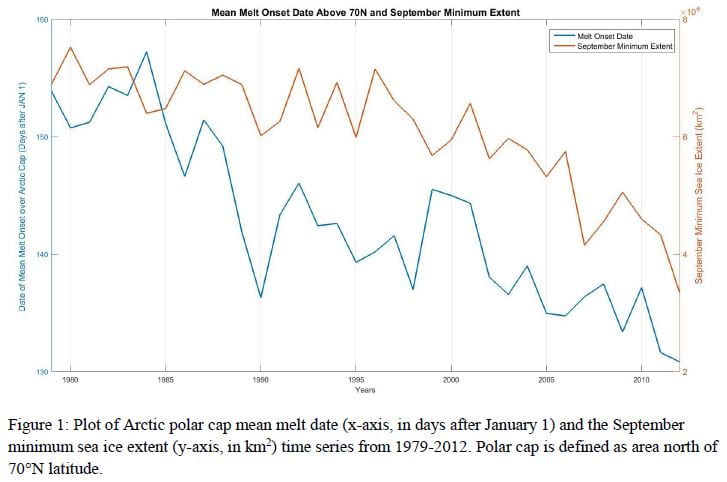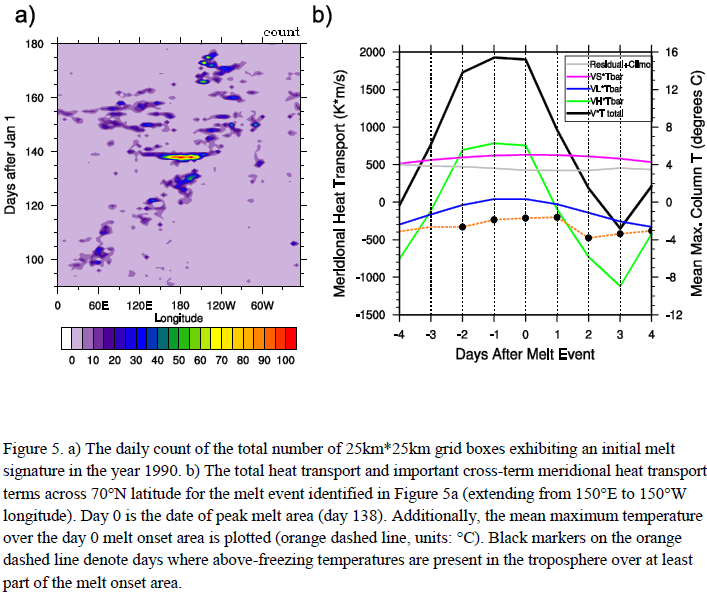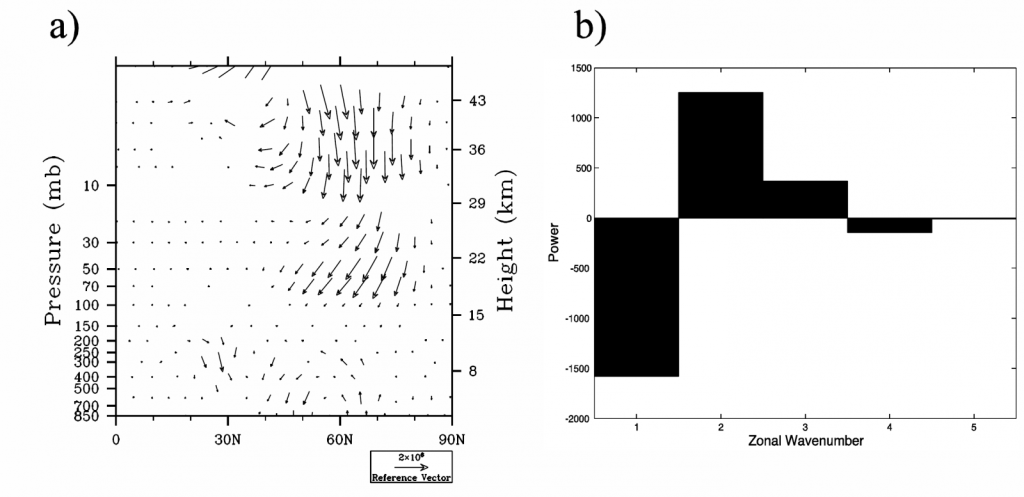Dynamical and Thermodynamical Impacts of High and Low Frequency Atmospheric Eddies on the Initial Melt of Arctic Sea Ice
The role of high-frequency and low-frequency eddies in the melt onset of Arctic sea ice is investigated through an examination of eddy effects on lower troposphere (1000-500mb) meridional heat transport into the Arctic and local surface downwelling shortwave and longwave radiation. Total and eddy components of the meridional heat transport into the Arctic from 1979-2012 are calculated from reanalysis data, and surface radiation data is acquired from the NASA Clouds and the Earth’s Radiant Energy System (CERES) project dataset. There is a significant positive correlation between the mean initial melt date and the September sea ice minimum extent, with each quantity characterized by a negative trend. Spatially, the earlier mean melt onset date is primarily found in a region bounded by 90°E and 130°W longitude. The decline in this region is step-like and not associated with an increase in meridional heat transport but with an earlier appearance of above-freezing temperatures in the atmospheric column. In most years, discrete short-duration episodes of melt onset over a large area occur. In an investigation of two of these melt episodes, a positive total meridional heat transport is associated with the peak melt, with the product of high-frequency eddy wind and mean temperature fields the most important contributor. Additionally there is a key positive anomaly in surface downwelling longwave radiation immediately preceding the peak melt that is associated with increased cloud cover and precipitable water. These results suggest the importance of carefully considering and properly representing atmospheric eddies when modeling the melt onset of Arctic sea ice.



Footprints of the Tropical Pacific Variability in the Decadal-Scale Variations of the Arctic Water Cycle
This NASA-funded project studies a “storm track” bridge that connects sea surface temperature (SST) variability in the tropical Pacific and decadal-scale variations in the Arctic energy and water cycle. We have shown that the two types of El Nino (i.e., central Pacific warming (CPW) versus eastern Pacific warming (EPW)) affects extratropical planetary wave and the strength of the polar stratospheric vortex in opposite directions (Hegyi and Deng 2011). This difference, plus the decadal-scale shift in preferred El Nino mode, translates into decadal-scale fluctuations in the Arctic Oscillation (AO), location of the North Atlantic storm track, and the associated poleward moisture transport by synoptic-scale disturbances, ultimately contributing to the long-term changes in the cool-season Arctic precipitation. The transient response of polar stratospheric vortex to tropical SST forcing shows great sensitivity to the initial vortex strength as demonstrated by a series of idealized-forcing experiments conducted with the NCAR WACCM model (Hegyi et al. 2012).



